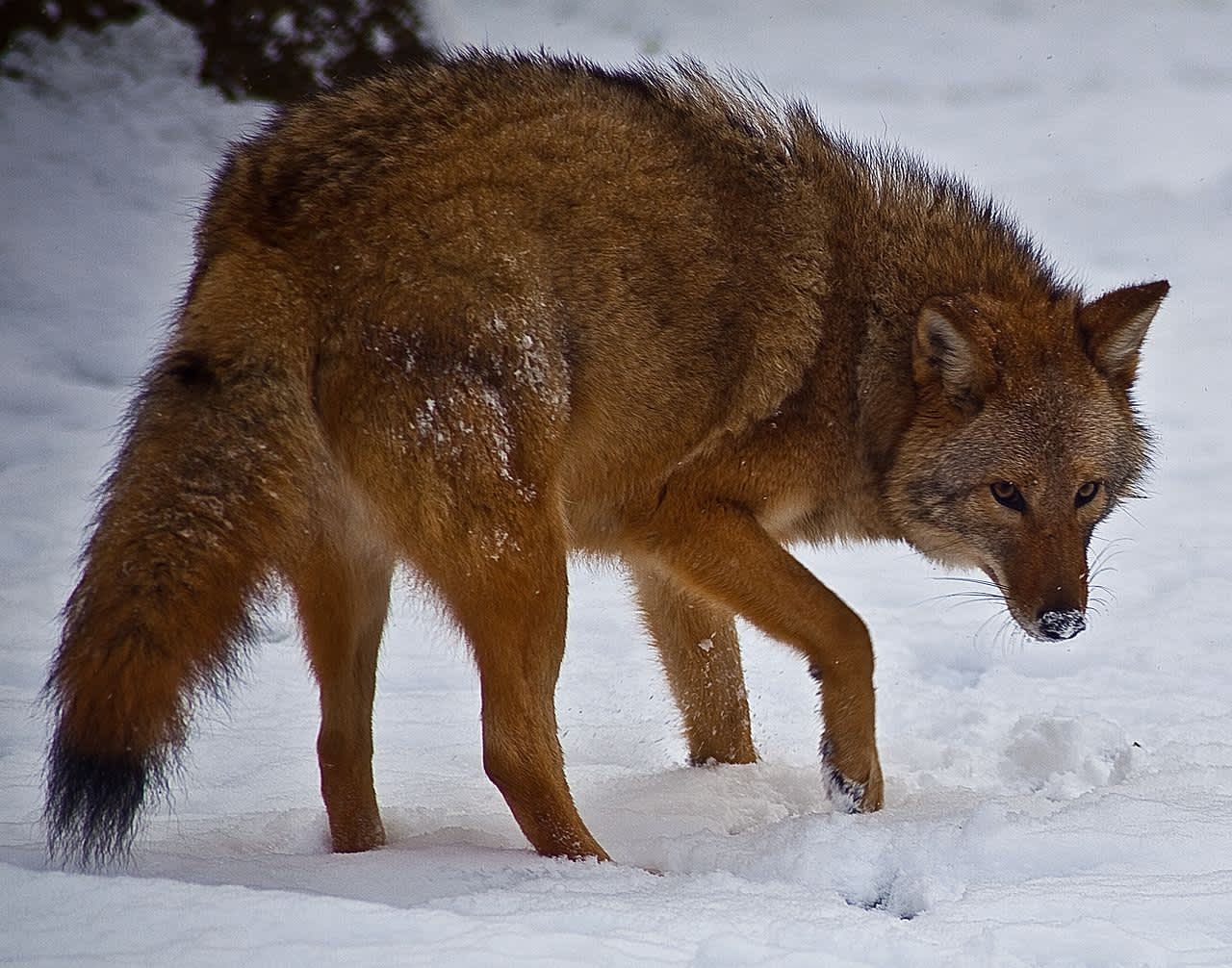Scientists Successfully Prevent Coyote-wolf Hybridization in NC
OutdoorHub Reporters 12.14.15

The issue of coyote-wolf hybrids has been troubling biologists for years, although the subject only recently entered mainstream discussion. The growing population of hybrids, or coywolves, has garnered attention from both researchers and the wider public, and now people are starting to question what measures are being taken to prevent coywolves from expanding even further.
A recent study published in the journal Biological Conservation shows that scientists are able to successfully prevent coyotes from interbreeding with wolf packs, but the effort is time-consuming and may not work with larger populations. This is especially true in areas where wolves and coyotes have already coexisted for decades.
According to the study’s lead author, ecologist Eric Gese, biologists were able to use “placeholder” coyotes to protect the endangered red wolf from hybridization in North Carolina. The concept was relatively simple: biologists captured and sterilized coyotes and then placed them near the fringes of wolf territory, preventing other coyotes from entering the area.
“The bottom line is that space is limited in the recovery area,” said the US Fish and Wildlife Service (USFWS), which is involved in restoring the red wolf population. “Ideally, within the restored red wolf population in northeastern North Carolina, that space is initially best occupied by breeding pairs of red wolves, non-breeding mixed (red wolf/coyote) pairs, and non-breeding coyote pairs. By sterilizing coyotes, introgression of non-wolf genes will be controlled and territories will be unavailable for colonization by breeding coyote pairs or red wolf-coyote pairs. ”
It gave the fragile wolf population enough of a buffer to grow safely without coyotes diluting the pure red wolf DNA. As the red wolves expanded, they drove off or killed the sterilized coyotes.
“Of the 182 placeholders, 125 were coyotes and 57 were hybrids. From 1999 to 2013, 51 placeholders were displaced or killed by wolves, and 16 were removed by management personnel. Thus, 37% of the placeholders were displaced leading to occupancy by a wolf,” the study stated.
The process took 15 years to complete, but researchers say that without the placeholder coyotes, “pure” red wolves would likely no longer exist. In 1973 just 14 of the animals were still alive in the wild. They were captured by the USFWS to establish a captive breeding population and over a decade later were released into North Carolina’s Alligator River National Wildlife Refuge. At the time, the top threat to the reintroduction effort was indeed coyotes.
However, many scientists believe that red wolves themselves are already hybrids. Although the USFWS and many biologists believe the red wolf is a distinct species of its own, some studies contend that it is actually a very old hybrid between gray wolves and coyotes. If that is true, then red wolves may be an example of what coywolves could become much later down the road. The eastern wolf is also suspected by some to be a wolf-coyote hybrid.
There are currently no accurate estimates on just how many coywolves exist in North America, but many expects expect the number to be quite high. Depending on what percentage of DNA constitutes a true hybrid, some researchers suspect there are already millions of coywolves on the continent, making measures to stop their expansion ambitious at best. Hunters and trappers are among the most likely to run into a coywolf. Larger, stronger, and with a larger appetite than true coyotes, coywolves are becoming a common sight in many states. According to a study by Dr. Roland Kay of North Carolina State University, a sample of wolves in the Great Lakes region found that they had approximately 15 percent coyote DNA, whereas wolves in parts of Ontario only contained 58 percent wolf DNA, and hybrid red wolves in North Carolina contained as little as 24 percent wolf DNA.

